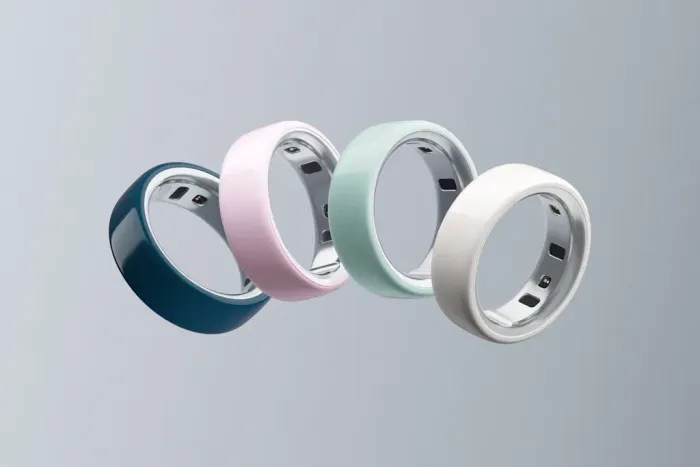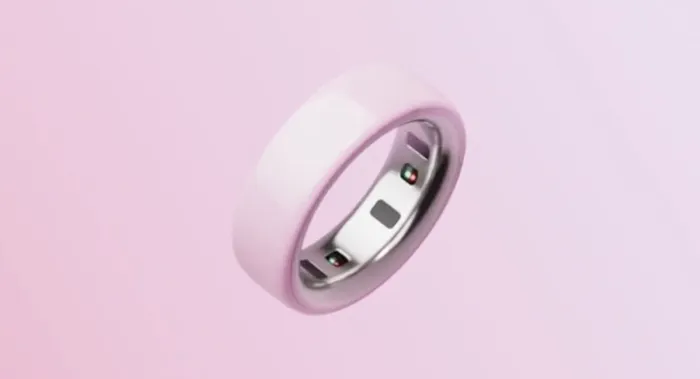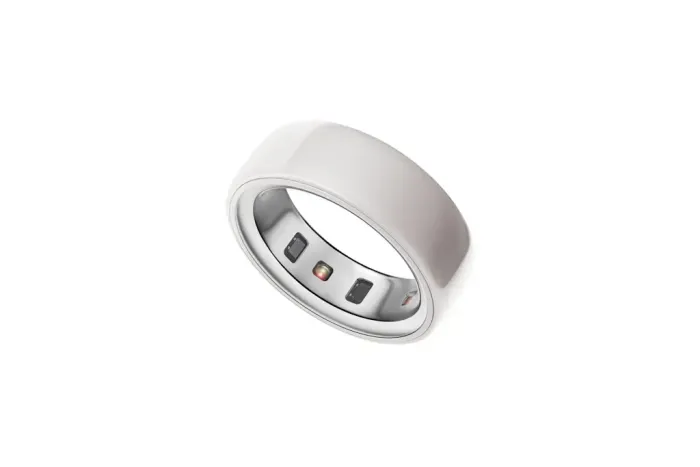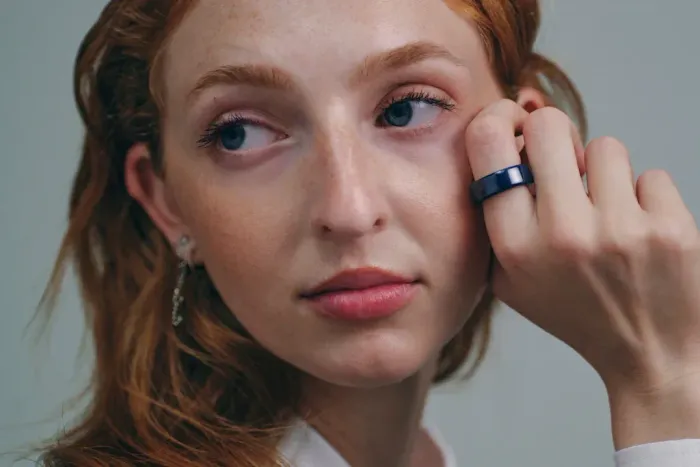
.
Image: Oura
Miklu Silvanto, Oura’s chief design officer, says incorporating advanced computing power into a tiny ring is a major challenge.
It’s just as challenging to make a ring that people will actually want to wear around the clock.
So Silvanto, an industrial design veteran who has worked at Apple and Bang & Olufsen, must also think of himself as a jewellery designer.
“A ring is such an intimate object,” he says. “You might wear it alongside your wedding ring. You need to think comfort, beauty, and fashion.”
On October 1, Oura launches a new collection of ceramic rings that are more fashion-forward than its previous ones, which resemble metallic wedding bands.
Since ceramic takes well to colour, the new rings come in an array of hues, including petal pink, tide green, cloud white, and midnight blue. The company has also developed a new software feature that will allow wearers to switch between rings seamlessly, without losing any data.

.
Image: Oura
These new rings cost $499 (R8,571), while the metallic versions are priced between $350 (R6,012) and $500 (R8,590), depending on the finish.
Users must also pay $70 annually to use the app that presents their health data, analysis, and advice. Given how expensive this product is, the idea of switching rings based on your outfit of the day may be an affordable reality to only a small, wealthy slice of the population, epitomised by some of the most famous Oura wearers, Mark Zuckerberg, Kim Kardashian, Prince Harry, and Gwyneth Paltrow, to name a few.
Still, the rings are resonating with consumers around the world. Oura sold 2.5 million rings last year, making up half of its total sales since 2015. And the company expects to generate $1 billion in sales this year, making it one of the biggest players in the wearable technology industry. After its $825 million Series E round, it’s now valued at $11 billion.

.
Image: Oura
For a designer like Silvanto, working on a smart ring involves incorporating as much technology as possible into the tiniest of products. When Oura launched a decade ago as a Kickstarter project, its first ring was much chunkier and could monitor only sleep and daily activity.
Since then, the Oura’s designers have managed to make the ring smaller. Both the metal rings and the new ceramic ones are roughly 8 millimeters wide, 2 millimeters thick, and weigh between 5 and 8 grams depending on the size. And the rings are able to track around 50 biometrics. To do this, they use several sensors, including an infrared LED that measures blood oxygen levels, green and infrared PPG (photoplethysmogram) sensors that track heart rate, a digital thermometer that measures body temperature, and a sensitive accelerometer that tracks movement.
Oura has benefited from broader changes in the technology industry that has been working toward miniaturisation. (This is similar to what has been happening at, say, Dyson, which is incorporating more and more powerful motors into smaller hairdryers and vacuums.)

.
Image: Oura
Silvanto says Oura has focused on incorporating this tech into a design that is as comfortable and beautiful as possible. The new rings are made from zirconia ceramic, which is significantly harder and more durable than the ceramic used for vases and dishware. The rings are shaped and then fired in a kiln, which chemically transforms them into the harder material. (In fact, it is so hard that it can take on the properties of softer metals.)
Silvanto stresses the appeal of the material’s ability to take on colors. The four hues in the new collection are glossy and vibrant. If Oura’s metallic rings look like simple wedding bands, these ceramic rings evoke the color of gemstones. It’s jewelry that allows users to express their tastes and aesthetic preferences.
Now that Oura is framing its rings as fashion objects, it wanted to ensure users were able to easily swap them on a daily basis to go with their various styles or moods. Silvanto says creating a system that would allow users to change rings while keeping all their data intact wasn’t simple. Data is stored in the ring itself, in the app, and in the cloud. “When a user switches between rings, all of this data needs to be synchronised to ensure that the tracking is accurate,” he says. (This new data-synching capability is live on iOS apps today and will be available on Android starting October 20.)
While the new ceramic designs are a significant launch for Oura, Silvanto says his team is already focused on dreaming up the company’s next-gen rings. As sensor technology continues to shrink, rings will become even thinner. And the team will continue to work on making them as stylish and fashion-forward as possible. “The best ring is one that people actually want to wear,” Silvanto says. “And to do that, you need to think beyond technology and about culture.”
ABOUT THE AUTHOR
Elizabeth Segran has been a staff writer at Fast Company since 2014. She covers fashion, retail, and sustainability. She has interviewed Virgil Abloh, Mara Hoffman, Telfar, Diane von Furstenberg, and Ulla Johnson, among many other designers.
